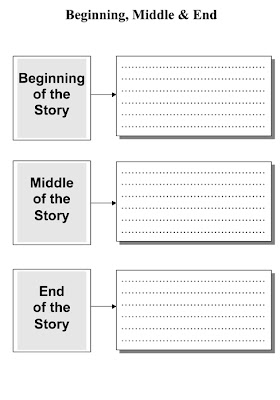Lecture 1
The Story Development
I. The IDEA:
a. Fairy Tales: ex. Beauty and the Beast; Snow White and the Seven Dwarfs; Cinderella.
b. Book Adaption: ex. Tarzan; Bambi; Pinocchio.
c. Original Idea: ex. Lion King: Ratatouille; Nightmare Before Christmas
II. The CREATIVES:
a. In Publishing (Graphic Novel & Children’s Books): Writer, Illustrator, Editor & Art Director.
b. In Animation: Writers, Artists, led by a Director and a producer.
III. The CONCEPT EXPLORATION:
a. Who; What; Where; When; Why; How?
IV. The CONCEPT:
a. Good concepts are rooted in a very simple core idea.
Ex. Lions, Pirates, Cars, Bugs
b. These ideas come with built-in audience recognition. It is then up to the writer and artist to blow-away those preconceptions.
V. The STORY BASICS:
a. After establishing a strong story concept, the write and illustrator develop strong characters with unique personalities.
b. Story is about those characters and the emotional journey they take.
c. The audience has to relate to the characters, and see themselves in the characters hopes, dreams, insecurities and desires.
d. UNDERLYING THEMES:
Ex. “Don’t judge a book by its cover”- (Beauty and the Beast)
“Good things come to those who wait”- (Cinderella)
e. Protagonist must have a basic action (motivation).
Ex. Snow White; STOP THE SPELL
Cinderella; GET THE PRINCE
101 Dalmatians; SAVE THE PUPPIES
The Odyssey; GET HOME
f. Simplicity and Clarity are really important in storytelling. What does the guy want? Why can’t he have it?
VI. STORY STRUCTURE: (3 parts like an opera)
a. Part one introduces the characters and their world, and gets into the characters dilemma. Part one should end with a problem.
Ex. Belles father is lost and captured by the Beast. Belle rescues father by taking his place.
b. Part two develops the plot and reveals the motives of the main characters and the depth of their relationship. Part two ends in a completely unsolvable problem for the hero. And all seems lost!
Ex. Belle goes from seeing the Beast as a monster to seeing him as a loving friend.
c. Act three is all about the resolution. The characters begin the act in a hopeless situation. Protagonist’s courage is revealed in the face of insurmountable odds, and often includes the undoing of evil, and the triumph of good, and the arrival “home” to a new psychological place.
d. The three-act structure is only a guideline. It’s important to be completely free with the story and let it be told in its own unique way.
I. The IDEA:
a. Fairy Tales: ex. Beauty and the Beast; Snow White and the Seven Dwarfs; Cinderella.
b. Book Adaption: ex. Tarzan; Bambi; Pinocchio.
c. Original Idea: ex. Lion King: Ratatouille; Nightmare Before Christmas
II. The CREATIVES:
a. In Publishing (Graphic Novel & Children’s Books): Writer, Illustrator, Editor & Art Director.
b. In Animation: Writers, Artists, led by a Director and a producer.
III. The CONCEPT EXPLORATION:
a. Who; What; Where; When; Why; How?
IV. The CONCEPT:
a. Good concepts are rooted in a very simple core idea.
Ex. Lions, Pirates, Cars, Bugs
b. These ideas come with built-in audience recognition. It is then up to the writer and artist to blow-away those preconceptions.
V. The STORY BASICS:
a. After establishing a strong story concept, the write and illustrator develop strong characters with unique personalities.
b. Story is about those characters and the emotional journey they take.
c. The audience has to relate to the characters, and see themselves in the characters hopes, dreams, insecurities and desires.
d. UNDERLYING THEMES:
Ex. “Don’t judge a book by its cover”- (Beauty and the Beast)
“Good things come to those who wait”- (Cinderella)
e. Protagonist must have a basic action (motivation).
Ex. Snow White; STOP THE SPELL
Cinderella; GET THE PRINCE
101 Dalmatians; SAVE THE PUPPIES
The Odyssey; GET HOME
f. Simplicity and Clarity are really important in storytelling. What does the guy want? Why can’t he have it?
VI. STORY STRUCTURE: (3 parts like an opera)
a. Part one introduces the characters and their world, and gets into the characters dilemma. Part one should end with a problem.
Ex. Belles father is lost and captured by the Beast. Belle rescues father by taking his place.
b. Part two develops the plot and reveals the motives of the main characters and the depth of their relationship. Part two ends in a completely unsolvable problem for the hero. And all seems lost!
Ex. Belle goes from seeing the Beast as a monster to seeing him as a loving friend.
c. Act three is all about the resolution. The characters begin the act in a hopeless situation. Protagonist’s courage is revealed in the face of insurmountable odds, and often includes the undoing of evil, and the triumph of good, and the arrival “home” to a new psychological place.
d. The three-act structure is only a guideline. It’s important to be completely free with the story and let it be told in its own unique way.

Comments
Post a Comment